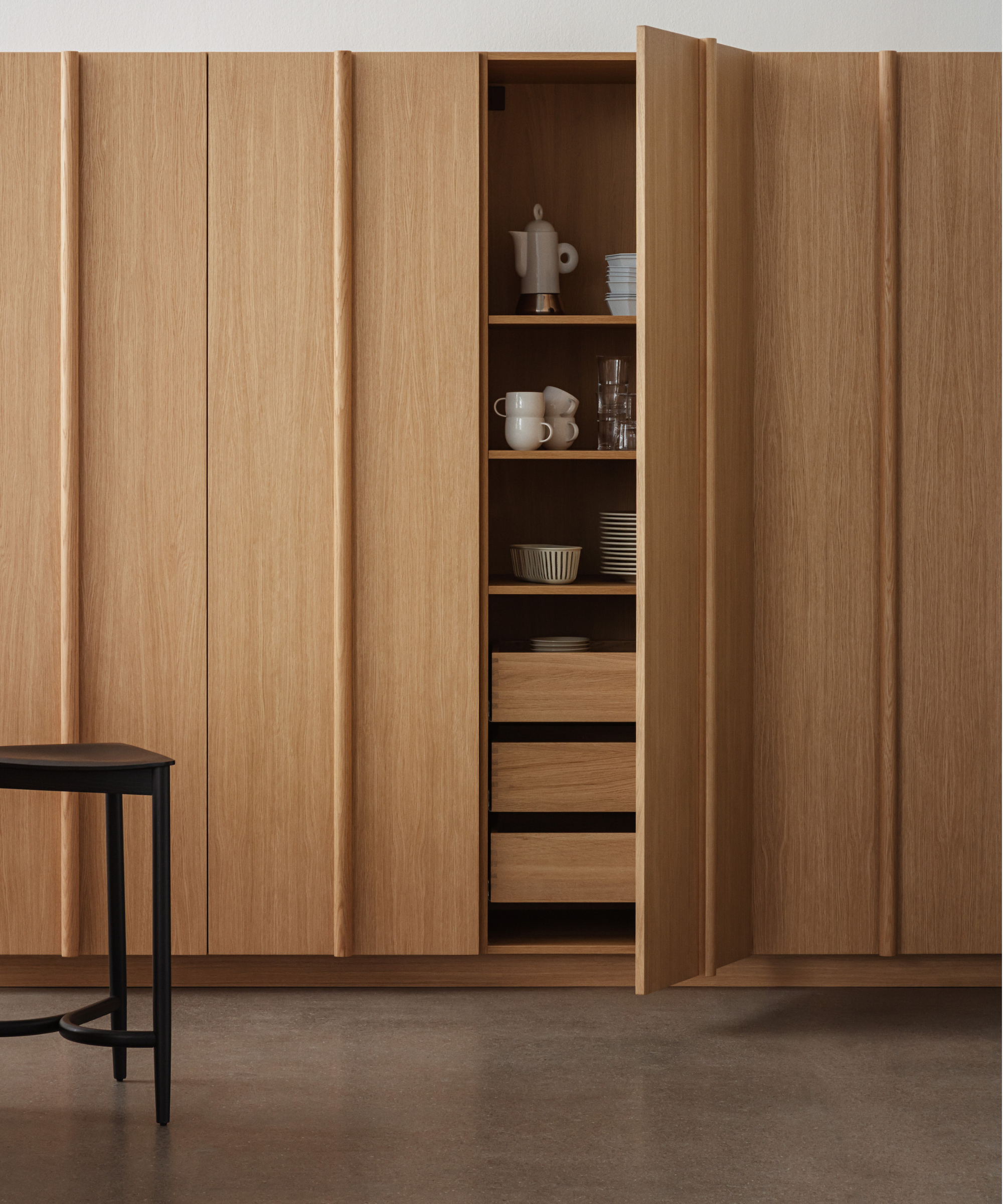
The one-in, one-out rule is an excellent strategy for those seeking to maintain clutter-free living spaces and adopt a more mindful approach to consumption. This rule is not just about minimizing possessions but about maximizing the quality and functionality of your space.
'Embracing the one-in, one-out rule transforms spaces into functional havens, ensuring essentials are readily available instead of buried among duplicates,' explains Megan McGovern, founder and CEO of Sort by Megan. 'This rule serves as the cornerstone of decluttering, guiding us to prioritize high-quality basics.'
Below, organizing and decluttering experts explain how to apply the one-in, one-out rule, tips for success, and its benefits.
How to apply the one-in, one-out rule to your home
'The one-in, one-out rule is a great way to maintain your space. When you decide that for every new item you bring in, you'll donate or discard one existing item, keeping any space in your home organized becomes easy,' says Erica Thompson, a professional organizer at Organized By Design.
'This method involves removing a current 'like' item if you purchase a new similar one,' explains Brenda Scott, professional home organizer and founder of Tidy My Space.
'It will also make you more mindful when you purchase things,' adds Erica Thompson. 'Are you ready and willing to let go of something to bring this new thing into your home? Is it worth the money and space?'
1. Assess your needs

Start by assessing what you currently have. Understand what items are essential, regularly used, or hold significant value.
'Then, before bringing in a new item, assess whether you genuinely need it,' advises Jackie Pittman, founder of Chez Nous Organizing. 'Consider its functionality, value, and how well it aligns with your lifestyle.'
'The one-in, one-out rule is great to implement after you have edited and organized your space. Once you have a good base and idea of your inventory, you move into what I call the maintenance phase,' explains Erica Thompson.
'You do this so you don’t “grow” more clutter and wind up back where you started. If you have gotten your things to a nice level of organization, you do not want to add more.'
2. Define the category

'Apply the rule to specific categories like clothing, books, or kitchen gadgets,' advises Jackie Pittman. 'For instance, if you buy a new shirt, part with an old one or TWO (even better).'
In other words, when bringing a new item into your home, commit to parting ways with a comparable item.
3. Prioritize quality over quantity

When replacing items, focus on quality. Consider the unique value each possession adds to your life – if a new acquisition doesn't outweigh an existing item, it's time to let go.
The goal of this decluttering strategy, which minimalists swear by, isn't just to exchange numbers but to improve or maintain the quality of your belongings. For instance, the next time you find yourself searching for a new appliance or kitchen gadget, consider making better kitchen purchases by prioritizing quality and longevity over fleeting kitchen trends.
'Instead of accumulating a large quantity of items, focus on acquiring high-quality, durable pieces,' recommends Jackie Pittman. 'This makes it easier to adhere to the one-in, one-out principle.'
4. Create designated spaces for your belongings

'Assign specific spaces for different categories and limit the amount each space can hold,' advises Jackie Pittman. 'When space is limited, you naturally become more mindful of what you bring in.'
'Similar to 'inventory control', having a set limit of items is usually dictated by the available storage space in a home,' adds Brenda Scott. 'I personally use this method when it comes to organizing holiday decorations because it can get out of hand if I purchase new pretty items without donating old and worn out items. My Christmas decor bins would take over my storage room very quickly.'
$6.99 at Walmart
When applying the one-in, one-out rule, having an organized system of household items can help you reflect on what you have and what can be decluttered.
$33.96 at Walmart
Keeping items categorized and labeled can make it easier to determine whether new items are worth exchanging for items you own, contributing to the mindful consumption this technique promotes.
$33.97 at Walmart
Keeping items in a divider can help you with inventory control. When dividers look crowded, you know it's time to declutter and step up your one-in, one-out game.
5. Donate, recycle, or sell 'out' items

When you bring in a new item, immediately identify an item of the same category you no longer need. If you're unsure what to do with items you are decluttering, consider donating, recycling, or selling the item you are replacing to maintain a balanced and clutter-free space.
This practice is not only environmentally friendly but also beneficial for your local community.
6. Engage in mindful shopping

A key part of the one-in, one-out rule is its promotion of mindful shopping practices. The idea is to be intentional with one's belongings and not fall into the pattern of mindless accumulation.
'Before making a purchase, ask yourself if the new item will truly add value to your life. Avoid impulse buys and be purposeful about what enters your home,' recommends Jackie Pittman. 'This is not to say you shouldn't buy anything, just be aware and mindful of what you are buying and why.'
Tips for success

- Regular maintenance: Periodically review your items to ensure everything you have is needed or brings you joy. Declutter unnecessary items. This helps you stay on top of items that are no longer serving a purpose.
- Involve the whole household: If you share your living space, encourage everyone to embrace the one-in, one-out rule. Encouraging your family to declutter creates a collective effort to maintain a clutter-free environment.
- Be realistic: Understand your lifestyle and needs. The rule should be a guideline, not a strict policy that creates inconvenience. There can always be exceptions to this rule, including certain items like consumables or essential non-durables that don’t need to follow it.
The benefits of using this rule

- It reduces clutter: Removing items discourages the buildup of unloved, unused, or unnecessary belongings.
- It promotes mindful purchasing: This rule not only ensures a balanced and harmonious living space but also encourages mindful consumption, leading to more deliberate and meaningful purchases.
- It facilitates a minimalist lifestyle: Regularly engaging in this practice supports the principles of minimalism by focusing on a few essential and valued items.
- It eases cleaning and maintenance: Fewer items in the home mean less to clean and maintain, making your cleaning routines more seamless.
Remember, this rule can be used selectively in the home according to your needs and preferences. You may not incorporate the one-in, one-out technique in every aspect of your home and life. For example, as a lover of clothes, I find it hard to declutter an old item after every new purchase, so I don't stick rigidly to the rule for these belongings, but I do with most others. This way, you can make this process your own, ensuring it aids your decluttering goals without feeling overwhelmed by the process.







